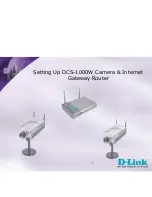
34-3
Cisco ME 3800X and 3600X Switch Software Configuration Guide
OL-23400-01
Chapter 34 Configuring MPLS, MPLS VPN, MPLS OAM, and EoMPLS
Understanding MPLS Services
Each label-switching router (LSR) in the network makes an independent, local decision as to which label
value is used to represent which forwarding equivalence class. This association is known as a label
binding. Each LSR informs its neighbors of the label bindings that it has made. When a labeled packet
is sent from LSR A to neighboring LSR B, the label value carried by the packet is the label value that B
assigned to represent the packet's forwarding equivalence class. Thus, the label value changes as the IP
packet travels through the network.
The ME 3800X and ME 3600X switches perform these LSR operations:
•
Swap and forward
The switch removes the top label, adds from 1 to 4 labels, then forwards the packet to the specified
adjacency with no Layer 2 or Layer 3 lookup.
•
Pop and forward
The switch removes the top label in the packet and forwards the packet to the specified adjacency.
•
Pop and lookup
The switch removes the top label and performs a lookup based on the exposed packet.
The type of lookup is determined by the popped label. The lookup could be:
–
IPv4—the label specifies a VRF or global table to be used for an IPv4 lookup.
–
MPLS Label—The switch performs a lookup on the exposed label. The exposed label might
specify a Swap or Pop operation. The switch performs up to three recursive MPLS label lookups
in the ternary content addressable memory (TCAM).
•
Drop packet
The switch drops the packet based on lookup of the top label.
A label represents a forwarding-equivalence class, but it does not represent a particular path through the
network. In general, the path through the network continues to be chosen by the existing Layer 3 routing
protocols, such as Open Shortest Path First (OSPF), Enhanced Interior Gateway Protocol (EIGRP),
Intermediate-System-to-Intermediate-System (IS-IS), and Border Gateway Protocol (BGP). At each hop
when a label is looked up, the choice of the next hop is determined by the dynamic routing algorithm.
The ME 3800X and ME 3600X switches support Label Distribution Protocol (LDP) session protection
to maintain an LDP session during a link failure. LDP session protection eliminates the need for the link
neighbor to relearn the prefix label bindings when the link recovers.
Provider Edge Routers (PE) operate at the edge of the provider network. They perform Label Edge
Router (LER) imposition and disposition operations at the edge of an MPLS network. In an MPLS
network, the ingress edge router receives the packet and adds a label to the packet. The egress edge router
removes the label.
The ME 3800X and ME 3600X switches perform these operations:
•
Push
The ingress switch adds one or more labels.
•
Pop
The egress switch removes a label and forwards the packet.
















































